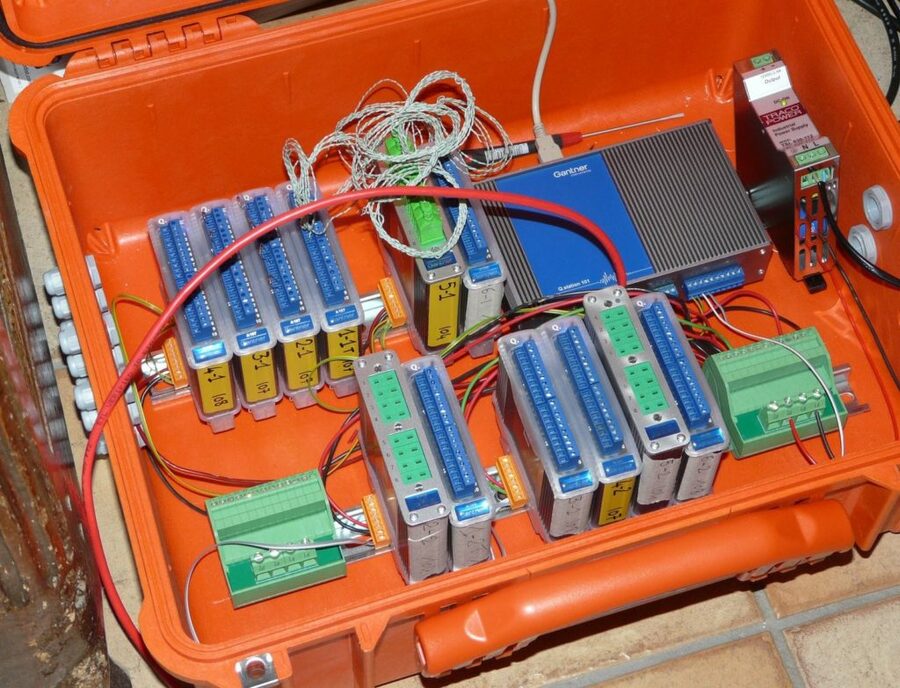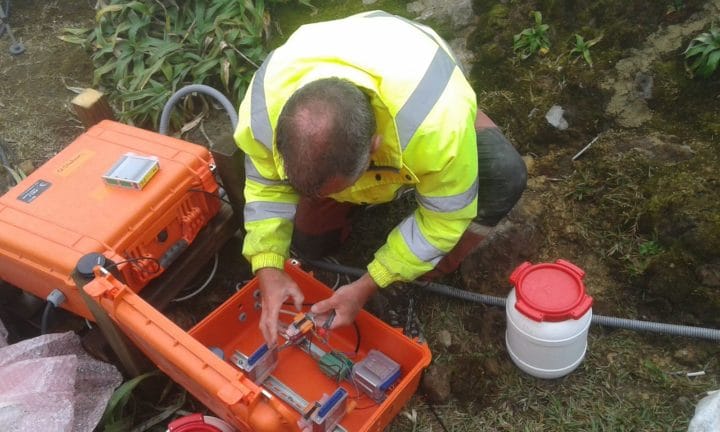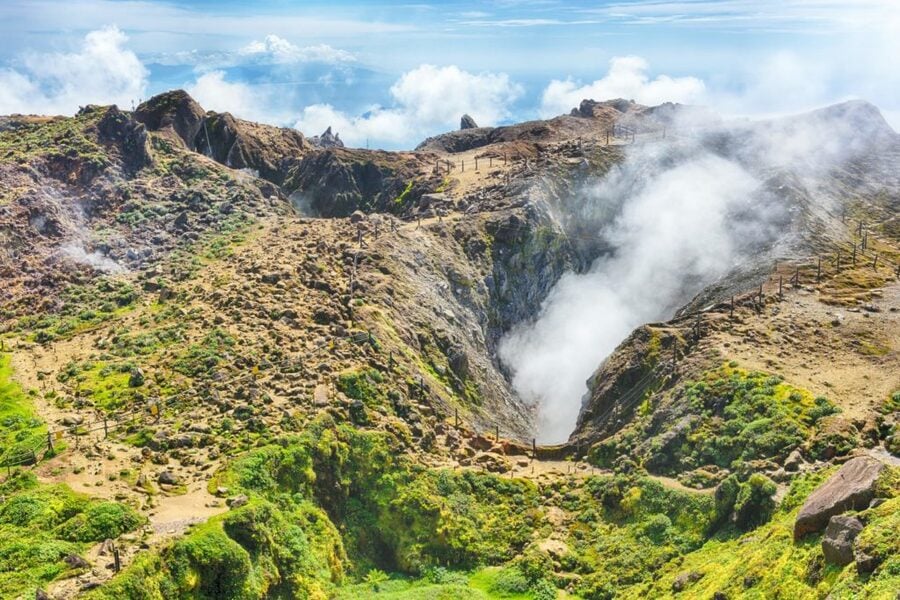The team at Geosciences Rennes, a joint mixed research unit between the University of Rennes and the CNRS (UMR-6118), has been conducting monitoring experiments on the volcano La Grande Soufrière over the last 15 years. La Grande Soufrière is located in Guadeloupe, a French overseas region located in the southern Caribbean Sea.
In response to the volcano regaining activity since 2014, the Géosciences laboratory decided to increase their monitoring capacity on the top of the lava dome by deploying a network of sensors (e.g., Pt100 in fumaroles, 1D and 3D seismic geophones, thermocouples in the soil, pressure sensor and Pt100 in the boiling acid lake). The team’s previous positive experience with the Gantner Instruments’ e.series (e.reader, e.pac, and e.bloxx) led them to retain the Q.series to develop their new acquisition network.

Figure 1 is a synoptic of the basic network at work since 2015: a Q.station 101 together with multiple Q.bloxx A108 and A107 modules distributed over three RS485 buses. Wind turbines and photovoltaic units provide electrical power to the network. A long-range Wi-Fi link is used to transmit the data to the volcano observatory located 10 km away. A GPS antenna is used to synchronize the Q.station, which is particularly crucial because precise time synchronization is needed to correlate the seismic data acquired with the geophones connected to A108 modules. Because of their versatility, A107 modules are used in the most active areas where multiphysics measurements are performed with either resistive, voltage, or current sensors. The A107 modules’ flexibility allows IPGP to test using their sensor prototypes in the measurement campaign.


The environmental conditions at the top of the volcano are very harsh. The main difficulties are heavy tropical rain (8,000 mm per year), strong winds, lightning storms, and acidic gases emitted by fumaroles. Despite these harsh conditions, Gantner Instruments systems remain operational almost all the time. The systems are protected using a “double box” technique. The first box on the outside is used to protect against heavy rains and wind. The conditions inside this container roughly correspond to IP62 except for the acidic gases present. A Pelican case is then placed inside the first box, which contains the DAQ system and protects against humidity and acidic gases.

The Géosciences laboratory is currently improving its acquisition network by installing several Q.stations at different locations around the volcano. This solution reduces the lengths of the RS-485 lines that appear sensitive to lightning and the GPS time synchronization provides a common time base for all measurement data.
For an example of the scientific usage of the data acquired with the Gantner Instruments DAQ platform, you may consult our recent paper regarding “Abrupt changes of hydrothermal activity in a lava dome detected by combined seismic and muon monitoring” available online.
More articles
Gantner Instruments at Aero Engine Testing 2025
On March 20–21, 2025, aerospace professionals, industry experts, and technology providers will gather in Mianyang for the 2025 Aerospace Equipment Digital Intelligence Test and Industry Development Conference. Under the theme “Digital Leadership in Aviation, Intelligent in the Blue Sky,” this event highlights cutting-edge progress in advanced aircraft engine digital intelligent testing, high-precision measurement, combustion, turbine, and strength testing. One main forum and five sub-forums will feature experts sharing insights and best practices, while an aircraft engine test technological achievements and product exhibition showcases the latest innovations.
Read more...Three steps to the Internet of Things (IoT) or: Where is analog big data derived from?
The break-up into the new era of Internet of Things (IoT), industry 4.0 or cloud computing takes an impressive pace and is also in several industrial applications irresistible. The industry with its huge amount of machines and components of divers size, value and function is faced by one big challenge: data from all these assets needs to be gathered and analyzed.
Read more...34th Dresden Bridge Building Symposium 2025
We are thrilled to announce the 34th Dresden Bridge Construction Symposium (DBBS), set to take place on March 19h/20th, 2025
Read more...Overcoming Challenges in Building Safe and Efficient Test Benches with test.con
Addressing Critical Obstacles in Test Bench Development
Developing test benches that comply with stringent safety standards and regulatory requirements is unavoidable in industries like automotive, energy, and medical technology. However, this process presents unique challenges, including navigating complex compliance landscapes, integrating diverse systems, managing operational risks, and ensuring thorough documentation. Below, we examine these challenges and demonstrate how Gantner Instruments' test.con software can effectively address them.
